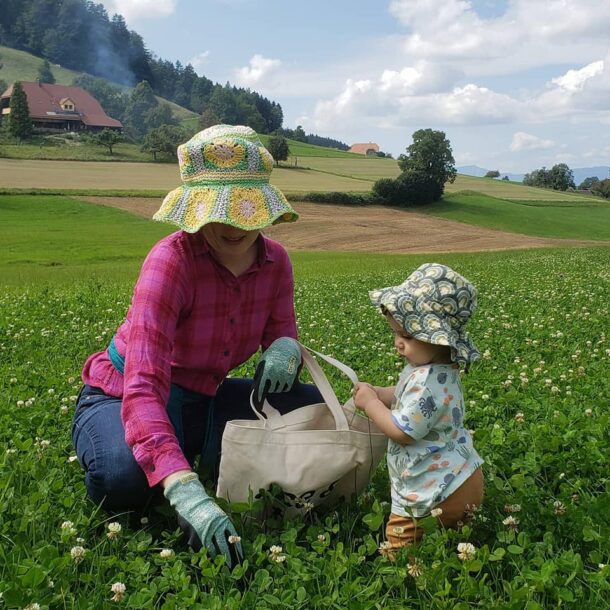Oneirogen is a word from the Greek óneiros, meaning to create a dream. They are a category of herbs, foods, or lifestyle practices that may do one of the following: induce vivid dreams, increase memory recall, enhance lucid dreaming, and deepen consciousness & meditative states. The chemical actions are done by creating a state similar to REM sleep. They may act as a mild to strong sedative depending on the herb. The herbs are all psychoactive, which may cause mild dreamlike states, deeper REM sleep or on the other end of the spectrum may be deliriants and strong hallucinogens, the latter are the ones we may want to use caution with or avoid completely. I recommend the ones that are safe in the recommended doses. With any herb, you never want to go overboard. Herbs contain phytochemicals and minerals, and even the safest herbs may cause an imbalance or toxicity if you overdose! That’s why I will share with you the recommended amount of each herb. In this article, I will share 5 herbs that act as oneirogens.
Why use oneirogens? Oneirogens, also known as dream-enhancing substances, hold a fascinating allure for those seeking to explore the depths of their consciousness and unlock the hidden realms of their dreams. Incorporating oneirogens into your practice can offer a multitude of benefits. Firstly, they can enhance the clarity and vividness of your dreams, allowing you to delve into rich and immersive dreamscapes. This can lead to a deeper understanding of yourself, your subconscious mind, and the symbolism within your dreams. Secondly, oneirogens can promote lucid dreaming, where you become aware that you are dreaming while in the dream state. This opens up a world of possibilities for exploration, self-discovery, and personal growth. Our dreams help us solve some of the mysteries about ourselves, may give us a clue to solve our struggles, pick up something our conscious mind didn’t, help us remember our loved ones, contain symbols, they may tell us something about the future (this happened to me once!), they may give us a vision for a new idea, and are just all around enjoyable for many of them like when you can fly, go to the top of a mountain or some other fun activity or power.

What mechanism strengthens our dreamlike state and memory recall? Well, I give credit to the chemical in our brains called Acetylcholine! Pronounced ah-see-tull-co-leen, is derived from choline, which is found highest in egg yolks! Choline is a precursor to cholesterol. Cholesterol is necessary for proper brain function. People who have low cholesterol due to a restrictive diet or ACE inhibitors (cholesterol-lowering medication) are at risk of Alzheimer, dementia, brain fog, and other forms of brain degeneration. Oneirogens, more often than not, increase Acetylcholine in the brain by acting as an Acetylcholine esterase inhibitor, which is why they are neuroprotective. That’s why you may experience memory improvement, especially memory recall in dreams from oneirogens.
Some examples of generally mild and preferable onereigen herbs are Blue Lotus, African dream herb, Mexican dream herb, Mugwort, and Valerian Root. Out of those herbs, Valerian Root is the strongest sedative. Let’s talk about some of these herbs more in detail.
Egyptian Blue Lotus: Nymphaea Caerulea

Main Constituents: apomorphine, nuciferine, oils, bioflavanoids, phytosterols, nupherine, nupharidine, other alkaloids, minerals
Parts Used: flowers, leaves, rhizomes, leaf-stalk, leaves
Actions and Properties: sedative, febrifuge, aphrodisiac, circulatory, antispasmodic, antidepressant, anti-carcinogenic, anti-convulsant, anti-inflammatory
Potential Uses: purify blood, treat tuberculosis, expel worms and parasites, relieve edema, vertigo, and vomiting, strengthen the breasts, enhance libido/treat erectile dysfunction, improve lactation, anti-anxiety, alleviate depression, arrest internal bleeding, sooth hemorrhoid pains, eliminate oral ulcers, fight eye disease, balance the menstrual cycle, check blood sugar levels
Blue Lotus, revered for centuries for its enchanting beauty and therapeutic properties, offers remarkable benefits as an oneirogen and mood enhancer. This sacred flower has been used in various ancient cultures for its ability to induce vivid and profound dream experiences. When consumed or used as a tea, blue lotus interacts with the brain’s neurotransmitters, promoting a relaxed state of mind and enhancing dream recall. As an oneirogen, it can heighten dream intensity, allowing for more vivid and memorable dreams. Furthermore, blue lotus has mood-enhancing properties that can alleviate stress, anxiety, and promote a sense of calm and tranquility. Its gentle euphoric effects can uplift the spirit and foster a positive mental state. By incorporating blue lotus into your routine, you can access its unique qualities, opening the gateway to vivid dreams, inner exploration, and a greater sense of well-being.
This is the main ingredient in the Dream Blend that gives mild psychoactive effects. I have personally seen vivid patterns and art inspiration after drinking my Dream tea when I close my eyes. 🙂
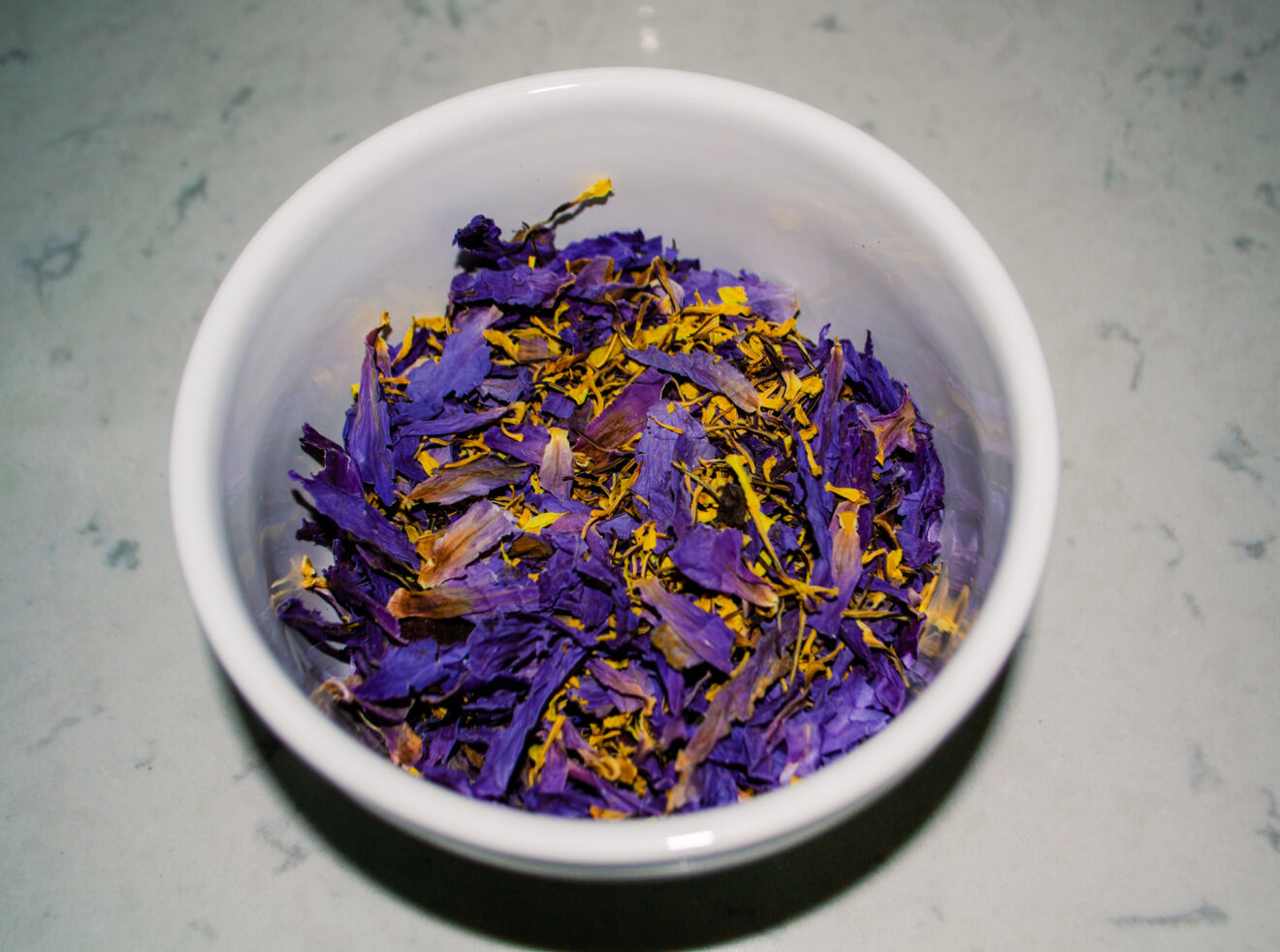
African Dream Herb: Silene Capensis
Main Constituents: phytoecdysteroids, triterpene glycosides, triterpene saponins, antioxidants, fatty acids, amino acids, various vitamins and minerals, and more
Parts Used: Root harvested after the second year
Actions and Properties: Increases vibrancy and vividness of dreams, antioxidant, anti-inflammatory, lowers blood sugar, lowers cholesterol
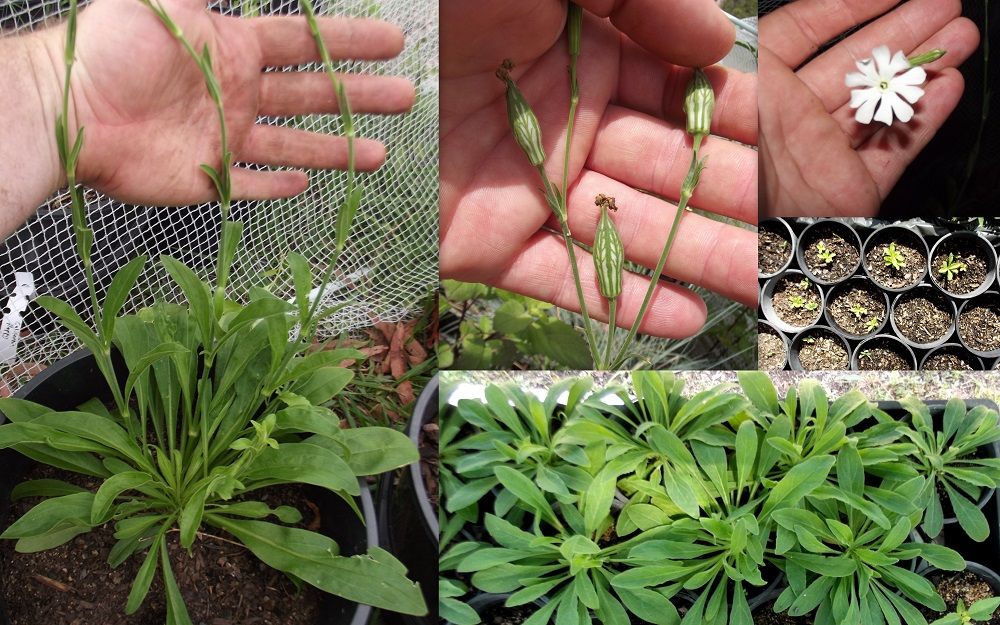
African Dream Root, scientifically known as Silene capensis, is a remarkable plant known for its traditional use as a dream-enhancing herb in African cultures. This sacred herb is believed to have profound effects on dreams, enhancing their intensity and promoting vivid, lucid experiences. When consumed as a tea or tincture, African Dream Root can stimulate the pineal gland, which is responsible for producing melatonin and regulating sleep-wake cycles. By supporting a healthy sleep pattern, it can lead to more restful sleep and an increased likelihood of experiencing lucid dreams. African Dream Root is also known for its potential to enhance dream recall, allowing individuals to remember and analyze their dreams with greater clarity and detail. This can lead to a deeper understanding of the subconscious mind, personal growth, and spiritual exploration.
In addition to its dream-enhancing properties, African Dream Root is also valued for its potential psychological and spiritual benefits. This herb is used by tribes in Africa such as the Xhosa in South Africa. They view it as a sacred herb and use it in their rituals. Many users report a heightened sense of introspection, self-awareness, and emotional healing when working with this herb. It is believed to facilitate access to the subconscious mind, helping individuals uncover and process deeply rooted emotions, fears, and desires. By fostering a deeper connection with the spiritual realm, this herb can serve as a tool for personal transformation, inner healing, and expanded consciousness.
“The most exciting development is this 2013 study which attempted to find the physiological mechanism behind the African dream root’s ability to induce unusual dream states. Although this study seems to have had serious funding shortages, it did manage to provide a pretty feasible hypothesis that saponids are the actor behind the root’s effects.
This would actually class silene capensis as an ‘AChEI inhibitor’ – putting it in the same category as galantamine and huperzine-A, both of which have become popular commercial lucid dreaming aids in the last decade.” (4)
Galantamine is a great substance that is used in pharmaceuticals for dementia and alzheimer’s, so I could see the potential benefit of long time memory improvement from this herb. This is an herb I hope to include in future preparations.
Mexican Dream Herb: Calea Zacatechichi

Main Constituents: Sesquiterpenes, flavanoids, camphor, curcumene, spathulenol, caryophyllene oxide, β-eudesmol, and caleochromene A
Parts Used: Aerial parts
Actions and Uses: Oneirogen, febrifuge, tonic, nootropic
Mexican Dream Herb, scientifically known as Calea ternifolia, is a revered plant known for its traditional use as a dream-enhancing herb in Mexican folk medicine. This powerful herb is believed to enhance dream recall, intensity, and vividness. When consumed as a tea or smoked, Mexican Dream Herb can stimulate the central nervous system and activate the brain’s dream centers, leading to more profound dream experiences. It is often used by those seeking to explore their subconscious mind, unlock hidden insights, and gain a deeper understanding of themselves. Additionally, Mexican Dream Herb is known to induce a state of relaxation, reducing anxiety and promoting a peaceful sleep. By promoting a restful sleep state, it can enhance overall sleep quality and support the natural process of dreaming.
Apart from its dream-enhancing effects, Mexican Dream Herb is also recognized for its potential psychological and spiritual benefits. Many users report a heightened sense of introspection, self-reflection, and expanded consciousness when working with this herb. It is believed to facilitate introspective journeys, leading to insights, personal growth, and spiritual exploration. This herb is scientifically shown to increase memory recall, vividness of dreams, imagery and dream intensity. (6) People may have mild hallucinations like vivid visions with their eyes closed before bed 20 minutes after taking the herb. The best way to ingest the herb is encapsulated 4-6 hours after going to sleep. REM sleep is deepest in the very early morning, so this herb at that timing helps you reap the benefits of deep REM sleep.
Mugwort: The Artemisia Family
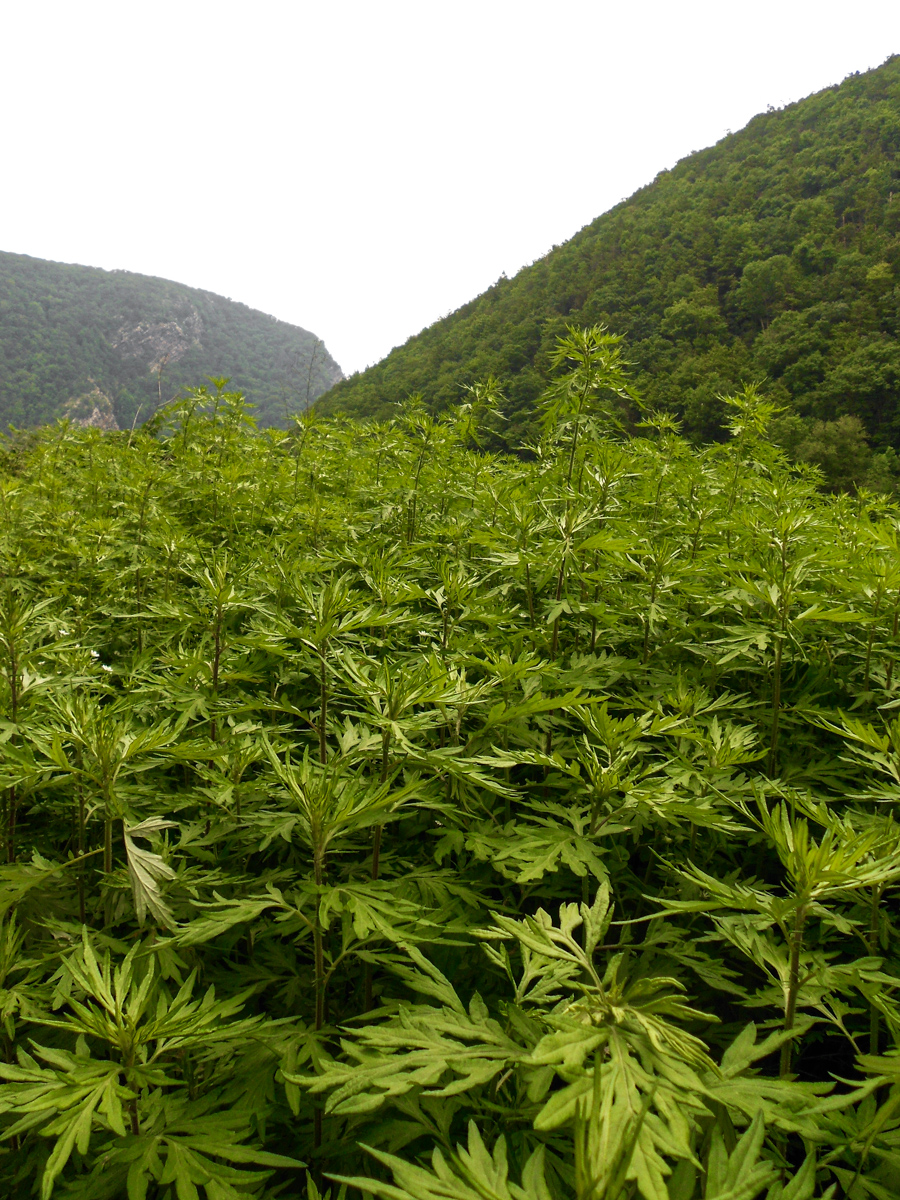
Main Constituents: Roots contain tannin, inulin, resin. Volatile oil contains over one hundred identified components including cineole, camphor and thujone. The flowers contain beta-sitosterol, coumarins, and alpha and beta-carotene. Study of a crude extract yielded alkaloids, coumarins, flavonoids, saponins, sterols, and terpenes. (8)
Parts Used: Leaves, root and flowering tops
Potential Uses: Anti-parasitic, anti-arthritic, diaphoretic, diuretic, emmenogogue, nervine, oneirogen, stomachic
Mugwort, scientifically known as Artemisia vulgaris, is a versatile herb that offers a wide range of benefits for physical, mental, and spiritual well-being. This ancient plant has been used for centuries in various cultures for its healing and protective properties. Mugwort is well-known for its ability to promote vivid and lucid dreams, making it a popular choice for those interested in dream work and exploration of the subconscious mind. When consumed or used as a tea, mugwort can enhance dream recall, intensify dreams, and support lucid dreaming experiences. It is believed to stimulate the pineal gland and increase brain activity during the REM (rapid eye movement) phase of sleep, enhancing the likelihood of experiencing transformative dream states. It is long known in folktales and folk medicine for it’s ability to increase dreams. Many people put a small bag of Mugwort under their pillow to increase lucid dreaming.
Beyond its dream-enhancing effects, mugwort also offers a range of other benefits. It has been traditionally used as a natural remedy for digestive issues, menstrual discomfort, and nervous system disorders. Mugwort is often employed in traditional practices such as moxibustion, where it is burned near specific acupuncture points to stimulate energy flow and promote healing. Additionally, mugwort has a long history of use in spiritual and energetic practices. It is believed to possess protective qualities, warding off negative energies and promoting clarity of thought. Mugwort can be used in rituals, ceremonies, and meditation practices to enhance intuition, inner guidance, and connection with the spiritual realm.
In popular culture today, it’s thought of as emergency contraception or abortifacient but the large amounts needed for such an action would severely damage the liver and is something I would certainly never recommend. I would still exercise caution with the use of this herb during pregnancy. Please consult a midwife about this herb to see if a small amount such as an ingredient in tea would be safe or not. This herb can be helpful in regulating menstrual cycles due to this very same emmenagogue (uterus stimulating) effect.
Valerian Root
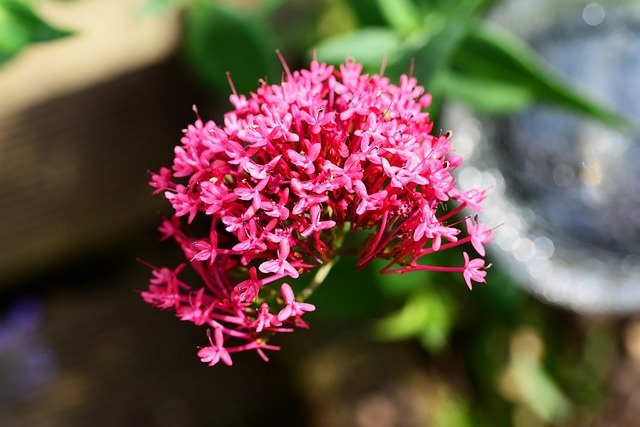
Main Constituents: Sesquiterpenes of the volatile oil (including valeric acid), iridoids (valepotriates), alkaloids, furanofuran lignans, and free amino acids such as γ-aminobutyric acid (GABA), tyrosine, arginine, and glutamine.
Parts Used: Root
Potential Uses: Nervine, antidepressant, hypnotic, hypotensive, sedative, antispasmotic, carminative, emmenagogue, oneirogen (10)
Valerian root, derived from the Valeriana officinalis plant, is a popular herbal remedy known for its calming and relaxing effects on the body and mind. Valerian root has been used for centuries as a natural sleep aid, helping to improve sleep quality and alleviate insomnia. It contains compounds that interact with gamma-aminobutyric acid (GABA) receptors in the brain, promoting a sense of calmness and tranquility. By increasing GABA levels, valerian root can help reduce anxiety, stress, and nervous tension, making it an effective natural remedy for those dealing with occasional or mild anxiety symptoms.
In addition to its sedative properties, valerian root has been found to have muscle-relaxing effects. It can help relieve muscle tension and cramps, providing relief for those experiencing muscular discomfort or menstrual cramps. Valerian root is also believed to have potential benefits for managing symptoms related to restlessness, irritability, and hyperactivity. It is commonly used as a natural remedy for individuals seeking a non-habit forming approach to promote relaxation and improve overall well-being.
It’s important to note that while valerian root is generally considered safe, it may interact with certain medications or have sedative effects that can impair cognitive and motor function. It’s advisable to consult with a healthcare professional before incorporating valerian root into your routine, especially if you are taking other medications or have underlying health conditions.
This herb has been something that has been near and dear to me for almost a decade as someone who has struggled with insomnia their whole life. This herb has been a major ally to me, so I included it in my Dream More Blend (click here for the link).
It’s likely to most wide-known herb for sleeplessness and insomnia, maybe besides chamomile. That’s why I blended the two together along with flavor enhances flowers and spices to make this a rich and unique blend. Valerian has been compared to the common sleep drugs in studies. (11) The root has a very aromatic and earthy taste, which I appreciate but I definitely prefer it as a flavor note rather than being the main flavor. Whilst, it is a more effective sleep inducer, it’s a less effective oneirogen, so I wouldn’t recommend having your dreams set on this one herb to induce dreaming, while it is still likely. It’s better for deeper sleep, which does come with the likelihood for dreaming of course!
Comment below on your favorite dream herbs, your experiences and any questions you have on oneirogens.
This is not medical advice, or intended to treat, diagnose or cure diseases. Please consult your doctor before trying these herbs.
References:
(1) Can Acetylcholine Make You Dream?
https://www.ncbi.nlm.nih.gov/pmc/articles/PMC6932847/
(2) Blue Lotus Monograph
https://www.goldwateralchemy.com/gold-mine/2019/8/9/egyptian-blue-lotus-monograph
(3) African Dream Root Information
https://herbgarden.co.za/mountainherb/herbinfo.php?id=287
(4) Silene Capensis: The African Dream Herb
https://www.world-of-lucid-dreaming.com/silene-capensis.html
(5) African Dream Root
https://www.healthline.com/nutrition/african-dream-root
(6) Psychopharmacologic analysis of an alleged oneirogenic plant: Calea Zacatechichi
https://www.sciencedirect.com/science/article/abs/pii/0378874186900024
(7) Calea Zacetechichi Review
https://www.world-of-lucid-dreaming.com/calea-zacatechichi-review.html
(8) Mugwort Monograph
https://www.herbrally.com/monographs/mugwort
(9) Mugwort for Dreams
https://www.world-of-lucid-dreaming.com/mugwort-dreams.html
(10) Valerian Monograph
https://www.herbrally.com/monographs/valerian
(11) Valerian Root: High and Mighty Sedative of the Saxons
https://www.world-of-lucid-dreaming.com/valerian-root-dreams.html


